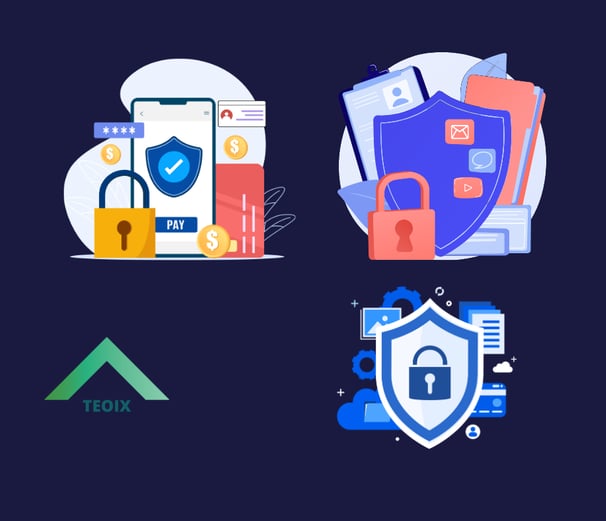Data Security vs. Data Privacy: Understanding the Distinctions and Interconnections
SECURITY
5/30/20244 min read


Data is now a vital resource in the digital age, driving everything from interpersonal relationships to commercial choices. As a result, data security and data privacy have become essential ideas that underpin the digital world. Despite the fact that these terms are frequently used synonymously, they refer to different but related aspects of data management and protection. This essay seeks to clarify the distinctions between and the connection between data security and data privacy, emphasizing the latter's significance in protecting data in an increasingly digital environment.
Defining Data Security
The term "data security" describes the procedures and policies put in place to guard against illegal access, modification, and destruction of data. Ensuring the confidentiality, integrity, and availability of data—often referred to as the "CIA triad"—is the main objective of data security.
Confidentiality:
Maintaining the privacy of sensitive data by limiting access to just those who are permitted. Secrecy is often protected using methods like encryption, access limits, and authentication procedures.
Integrity:
Preserving the data's precision and comprehensiveness. This entails preventing unauthorized persons from changing or tampering with data. Digital signatures, hash functions, and checksums are a few technologies that are used to guarantee data integrity.
Availability:
Making sure that authorized users may access data as needed. To prevent data loss and provide constant access, this entails putting comprehensive backup plans, redundancy, and failover systems into place.
Key components of data security include:
Encryption:
Data transformation into a coded format to stop unwanted access is known as encryption.
Access controls:
Limiting who has access to a computer environment's resources.
Firewalls and Antivirus Software:
Networks and systems are shielded from harmful attacks by firewalls and antivirus software.
Data Masking:
Data masking is the process of removing sensitive information from a dataset to prevent unwanted access.
Defining Data Privacy
Information privacy, or data privacy, refers to the appropriate management, processing, storing, and use of personal data. It centers on people's rights to decide how their personal data is gathered and utilized. Ensuring that personal data is gathered, processed, and stored in accordance with laws and regulations aimed at safeguarding individual private rights is the essence of data privacy.
Key principles of data privacy include:
Consent:
Making sure that people have expressly agreed to the collection and use of their data.
Transparency:
Making information regarding the use of personal data easily understandable and accessible.
Limiting the Use of Data:
Gathering information solely for predetermined, legal objectives and not utilizing it for other purposes.
Data Minimization:
Data minimization is the practice of just collecting personal information that is directly pertinent to and required for the intended use.
Individual Rights:
Guaranteeing that people can limit, amend, remove, and access the personal information that is processed about them.
The protection of personal information is enshrined in a number of international laws, including the California Consumer Privacy Act (CCPA) in the United States and the General Data Protection Regulation (GDPR) in the European Union, among others.
The Interconnection Between Data Security and Data Privacy
Despite being two separate ideas, data security and data privacy are fundamentally related. Strong data security measures are necessary for effective data privacy in order to shield private data from breaches and unwanted access. On the other hand, in order to guarantee that efforts to protect data do not violate the rights of individuals to privacy, data security must take privacy principles into account.
Compliance:
Putting in place robust security measures to safeguard personal data is frequently necessary to comply with privacy requirements. Legal ramifications and reputational harm are possible outcomes of noncompliance.
Trust:
Good privacy and data security procedures foster trust among stakeholders, including staff members and clients. People are more likely to interact with and trust an organization when they feel that their data is safe and managed appropriately.
Risk management:
By combining privacy and security, you can lessen the chance of identity theft, illegal access, and data breaches. This all-encompassing approach to data security strengthens an organization's defenses against online attacks.
Challenges and Best Practices
Companies struggle to strike a balance between data security and privacy for a number of reasons:
Changing Threat Environment:
Due to the constant evolution of cyber threats, enterprises must keep up with the newest security practices and technologies.
Regulatory Compliance:
It can be difficult to navigate the complicated web of international data privacy laws. Organizations are responsible for making sure that different legal frameworks—each with its own set of requirements—are followed.
Data Proliferation:
Managing and safeguarding the exponentially growing amount of data created by people and businesses becomes more difficult.
To address these challenges, organizations should adopt best practices such as:
Data Encryption:
To prevent unwanted access, encrypt critical data while it's in transit and at rest.
Access Controls:
Strict access controls should be put in place to guarantee that only people with permission can access sensitive information.
Frequent Audits and Assessments:
To find vulnerabilities and guarantee regulatory compliance, conduct routine security audits and privacy assessments.
Employee Education:
To lower the danger of insider threats and human error, teach staff members about best practices for data security and privacy.
Privacy by Design:
Provide privacy considerations from the beginning while developing new systems, goods, and services.
Conclusion
In today's digital world, it is crucial to comprehend the differences and linkages between data security and data privacy. Data privacy is concerned with making sure that personal information is handled and used appropriately, whereas data security is concerned with shielding data from illegal access and breaches. In the age of digital technology, both are essential for preserving data and fostering trust. Organizations may effectively protect data and maintain individual privacy rights by implementing a comprehensive approach that incorporates robust security measures with privacy principles. This approach will build a secure and trustworthy digital environment.


